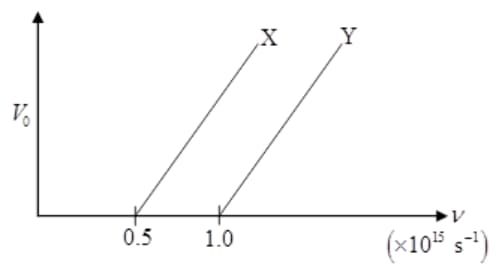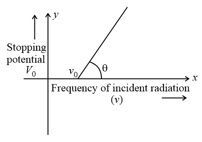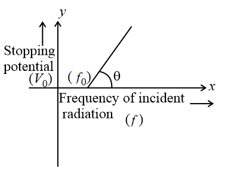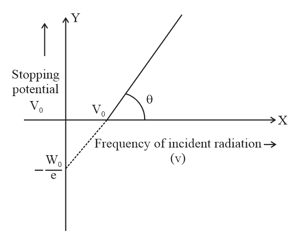Photoelectric Effect
Photoelectric Effect: Overview
This topic covers concepts, such as, Photoelectric Effect, Stopping Potential for Photoelectrons, Work Function of a Metal & Secondary Electron Emission etc.
Important Questions on Photoelectric Effect
The stopping potential in an experiment on photoelectric effect is 1.5 V. The maximum kinetic energy of the photoelectron emitted would be:
The stopping potential in an experiment on the photoelectric effect is . The maximum kinetic energy of the photoelectron emitted would be
The stopping potential in an experiment on the photoelectric effect is . The maximum kinetic energy of the photoelectrons emitted would be
The maximum kinetic energy of a photoelectron is 3 eV. Its stopping potential is:
The Einstein’s photoelectric equation in terms of the stopping potential and the threshold frequency for a given photosensitive material is
The Einstein’s photoelectric equation is:
The Einstein’s photoelectric equation is:
The following graph shows the variation of stopping potential with frequency of the incident radiation for two photosensitive metals and .

Which metal has
(i) a smaller threshold wavelength?
(ii) smaller kinetic energy?
The following graph shows the variation of stopping potential with the frequency of the incident radiation for two photosensitive metals and :

(i) Which of the metals has larger threshold wavelength? Give reason.
(ii) Explain, giving reason, which metal gives out electrons, having larger kinetic energy, for the same wavelength of the incident radiation.
The graph between frequency of incident radiations and stopping potential for a given photosensitive material is as follows.

What information can be obtained from the value of the intercept on the potential axis?
The graph between frequency of incident radiations and stopping potential for a given photosensitive material is as follows.

What information can be obtained from the value of the intercept on the potential axis?
The graph between frequency of incident radiations and stopping potential for a given photosensitive material is as follows.

What information can be obtained from the value of the intercept on the potential axis?
Show graphically how the stopping potential for a given photosensitive surface varies with the frequency of the incident radiation.
In the photo-electron emission, the energy of the emitted electron is
The maximum kinetic energy of electrons emitted in the photoelectric effect is linearly dependent on the________________ of the incident radiation.
The light emitted in the transition to (where is the principal quantum number of the state) in hydrogen is called -light. Find the maximum work function that a metal can have so that -light can emit photoelectrons from it.
For photoelectric effect which of the following statements are true.
I) The kinetic energies of the photoelectrons do not depend on the frequency of light
II) Photoelectric effect will always occur for highly intense light
III) The maximum kinetic energy of photoelectron does not depend upon the intensity of the light
IV) The escaping electron's kinetic energy is larger for larger frequency
The value of Plank's constant, if the slope of the graph of stopping potential vs frequency of incident light is is (given charge of an electron )
In a photoelectric effect, the maximum energy of the photoelectron is attained with exposure of light. If the maximum kinetic energy of the photoelectron is , the threshold wavelength will be (use )
Threshold frequency of incident radiation in a photoelectric experiment
A) depends on material
B) depends on wavelength
C) depends on intensity
